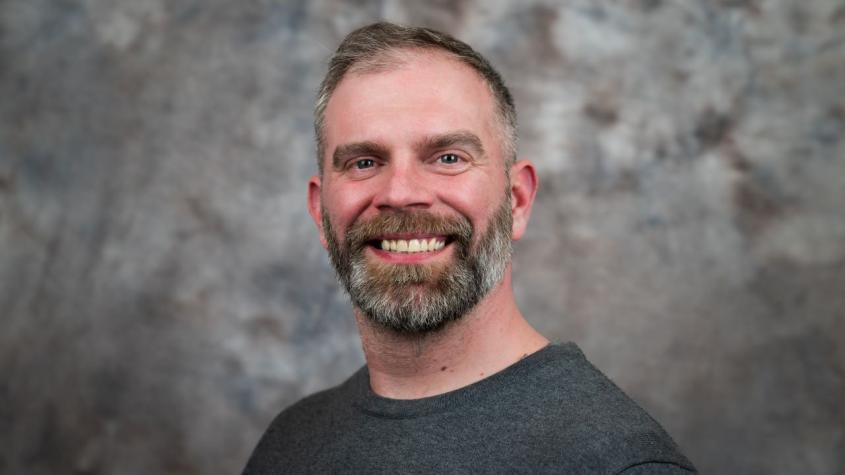New faculty profile: Dr. Bill Ryerson
The Cornell University College of Veterinary Medicine has recently welcomed many new faculty members to our academic departments, each one bringing a unique set of skills and experience that enriches our college every day. In this Q&A series, you'll get to know their interests, expertise and more.
Dr. Bill Ryerson, senior lecturer, Department of Biomedical Sciences
Q: What has been your path leading to Cornell?
My path to Cornell has certainly been a winding one. My undergraduate degree is in marine science from the University of Maine. I switched paths from there to a Master’s in integrative biology at the University of South Florida and a Ph.D. in ecology and evolutionary biology at the University of Connecticut. I was fortunate enough to land a faculty position right out of my Ph.D. at Saint Anselm College, a small liberal arts college in New Hampshire. I was there for almost ten years before coming to Cornell University College of Veterinary Medicine.
Q: What drew you to CVM?
Cornell has an incredibly rich history in anatomy, and the D.V.M. program is among the best in the world. I could not pass up the opportunity to teach in this program with these students. My colleagues are also incredible. On any given day I could be working with other anatomists, amazing clinicians, dedicated teachers and world-class researchers; all extremely talented and hard-working members of our community.
Q: What is your academic area of expertise?
My background is in comparative anatomy and biomechanics, particularly of amphibians and reptiles. Within that very broad field, my research work has been primarily in how animals feed. This includes sensory systems, the muscles/bones of the skull, and teeth.
Q: What drew you into this area?
I have always been interested in the “how” of anatomy and behavior. How do snakes strike so rapidly? How does the shape of a turtle shell impact its ability to swim? How does raising animals in captivity for conservation impact their anatomy and behavior? I am very lucky to have been surrounded by scientists in this field who continue to inspire every day.
Q: What past professional work are you most proud of and why?
I am first and foremost a teacher, and I am very excited to have been recently named the course Leader for Block 1 – The Animal Body. This course is the introductory anatomy course for first-year students in the D.V.M. program. I am looking forward to working closely with my colleagues at providing the best possible educational experience and learning environment for our students. Thankfully, there are a number of great people involved in Block 1, all of whom are dedicated to the students and their learning.
In my research, I recently published a book chapter on the interaction of snake strike behavior and the shape of their teeth. This work was picked up by a few media outlets and has inspired several hopeful collaborations.
Q: What impacts or applications do you hope to see your work have?
I hope that the research will spur others to look more carefully at the interactions of anatomy and behavior in contexts beyond locomotion. I also hope that workers in the field will also look at how plastic anatomy can be, depending on the environmental interactions that an animal has.
Q: What’s something most people don’t know about you?
I am heavily involved in iNaturalist, a community science website, making identifications of reptiles, amphibians, birds and mammals for people across the country. I have a million small hobbies when time allows including woodworking, glass engraving and wildlife photography.
Q: What’s the best part of your professional work?
There are two aspects that jump to mind. The first is that in teaching, it’s great to connect with the students and see them grow as individuals and professionals. The second is the opportunity to work with so many different wonderful animals and always learning something new about them.
Q: What’s the most challenging part?
I always want to be improving. That includes my teaching, my research and outside of work as well. There’s always something I could improve on.
Q: What are the benefits of working at CVM? At Cornell?
I do not think you could ask for a more collegial environment than we have here at CVM. The blend of expertise, experience and opportunity make this a great place to be. I feel truly supported here. Ithaca and the surrounding areas are a wonderful place to live, especially if you’re a fan of the outdoors as I am.





